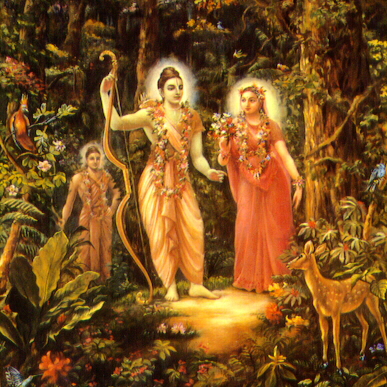Ramayana : Ancient Indian Epic.



Prologue:
Ramayana is one of the oldest epics of the world and it enjoys the rare distinction of having enjoyed popularity even after thousands of centuries. This epic is perhaps one of the first great literatures that human civilization has come up with. And it still survives...not just in books but in hearts of millions of people.
Ramayana is a story of King Rama who ruled Khosala, one of the ancient Indian kingdoms. Ramayana, over the years has been translated into different languages, both Indian and foreign. It is understandable that so many people wanted to rewrite this story even though their audience mostly know the story. The reason is simple, the original story of Ramayana is most engaging and gripping to any average reader. It is thrilling tale of a human being trying to be just and fair, even in the face of overwhelming challenges. Thus it is no surprise that many authors have written this magnificent tale in different languages. Some authors used their creative license to change certain scenes slightly to suit the tastes of their audience or to make some scenes even more dramatic. But the widely acknowledged original version is written in Sanskrit by Valmiki. Valmiki is considered the adi kavi(first poet) of India. He composed the Ramayana in Sanskrit language. Sanskrit is an old Indian language which is today not spoken widely. A pity because it is the language in which most ancient literary treasures have been composed. Sanskrit is considered the mother of most Indian languages, that is one reason why many indian languages share many similar words. Because they are all derived from Sanskrit.
Ramayana has been very popular in India and many characters are wi dely famous. But interestingly some popular scenes are absent or different in the original Srimad Ramayanam written by Valmiki.
dely famous. But interestingly some popular scenes are absent or different in the original Srimad Ramayanam written by Valmiki.
I am attempting to write briefely the original Srimad Ramayana story to the best of my knowledge and ability in a simple and modern way to those who are interested in learning about the Indian ancient epic. The Ramayana gives us a window to the exceptionally rich, mature and broadminded culture of India whose roots are in the saying " Vasudaiva Kutumbakam(World is a family)". This saying is millenias old but is refreshingly modern and similar to the latest buzz word "global village".
Similarly, the Ramayana though an old story, it surprisingly strikes a chord in our modern lifestyle. It not only teaches us ancient values of India, but it also parallely tells a story of India's riches, its heritage, its culture but more importantly history of mankind...



dely famous. But interestingly some popular scenes are absent or different in the original Srimad Ramayanam written by Valmiki.
Please refer to this script:-
ReplyDeletehttp://www.bl.uk/learning/cult/inside/gallery/4sons/foursons.html
Please clarify, the birth of Rama was orchestrated by the Rishi known as Vishwamitra Shrungha. Not some Vishnu Avatar.